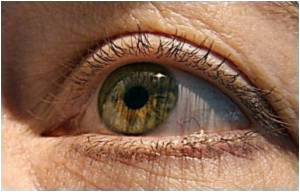
In the laboratory of Jackson Professor and Howard Hughes Medical Institute Investigator Simon John, study coauthors Stephen Kneeland, and Gareth Howell, identified a malfunctioning gene in a mouse strain that develops both cataracts and glaucoma. The gene, Tdrd7, fails to build an essential protein and disrupts the development of the mouse eye lens. Mice missing the protein developed high intraocular pressure and optic nerve damage-the hallmarks of glaucoma-as well as cataracts.
The John team learned that Salil A. Lachke, of Brigham and Women's Hospital and Harvard Medical School, then a research fellow in the laboratory of Richard L. Maas, had found the same malfunction in a study of genetic data from patients with pediatric cataracts.
The research teams combined forces and discovered that the protein missing in the children and the mice belongs to a type of structure known as RNA granules.
RNA granules function to regulate mRNAs in the cell. mRNA's primary job is to serve as a template to carry DNA-encoded information from the nucleus into the cytoplasm or body of the cell, providing the blueprints for protein production.
The TDRD7 mutation affects mRNA regulation, and this misregulation was implicated in causing the cataracts. Furthermore, the human patients developed glaucoma following cataract extraction.
Advertisement
Although further experiments are needed to be certain, this work is the first to suggest that RNA granules are important in modulating the oxidative stress response relevant to glaucoma.
Advertisement
John said that mutations in the TDRD7 gene could cause a double jeopardy for childhood glaucoma.
"First, they cause cataract, and cataract extraction may raise oxidative stress in the ocular drainage tissues. Second, they impair the formation of protective stress granules in response to oxidative stress," added John.
The study has been published in the March 25 issue of Science.
Source-ANI














